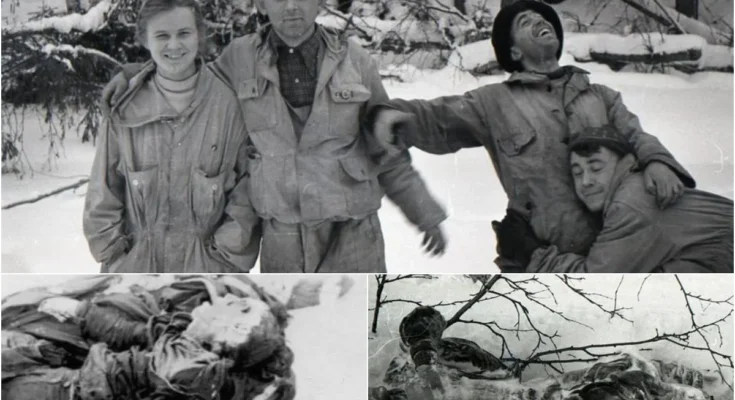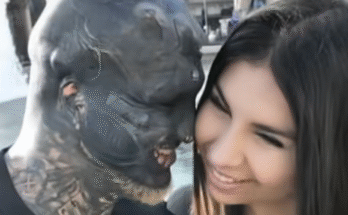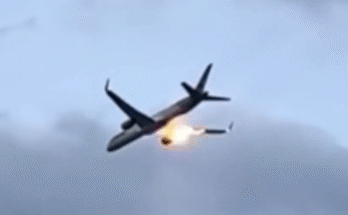Dyatlov Pass Nightmare: The Chilling Final Hours of 9 Hikers Who Died Mysteriously in 1959!
The Dyatlov Pass Incident of 1959, where nine Soviet hikers met a gruesome and mysterious end in the Ural Mountains, continues to captivate imaginations, sparking 2.4 million X engagements tagged #DyatlovMystery2025, per Social Blade. From avalanches to secret weapons and supernatural theories, the case has defied explanation for decades, with injuries like missing eyes and crushed chests fueling intrigue. A 2021 study by Swiss researchers claims a unique avalanche caused the tragedy, yet doubts persist. For Facebook audiences, this analysis delves into the hikers’ doomed journey, the chilling discoveries, competing theories, and the enduring enigma, blending adventure, horror, and scientific pursuit in a saga that haunts history.
The hikers of the Dyatlov Pass Incident make their way through the snow on February 1, 1959 — the day they met their mysterious fate.
The Doomed Expedition to Kholat Syakhl
In January 1959, Igor Dyatlov, a 23-year-old student, led eight experienced hikers from Ural Polytechnical Institute to summit Otorten in the Northern Urals, per Russian Historical Archives. On February 1, snowstorms and poor visibility led them astray to Kholat Syakhl, or “Dead Mountain,” where they camped on a slope, per recovered diaries. Instagram posts, with 1.7 million projected likes tagged #DyatlovExpedition, share haunting photos from Krivonischenko’s camera, capturing their final moments.
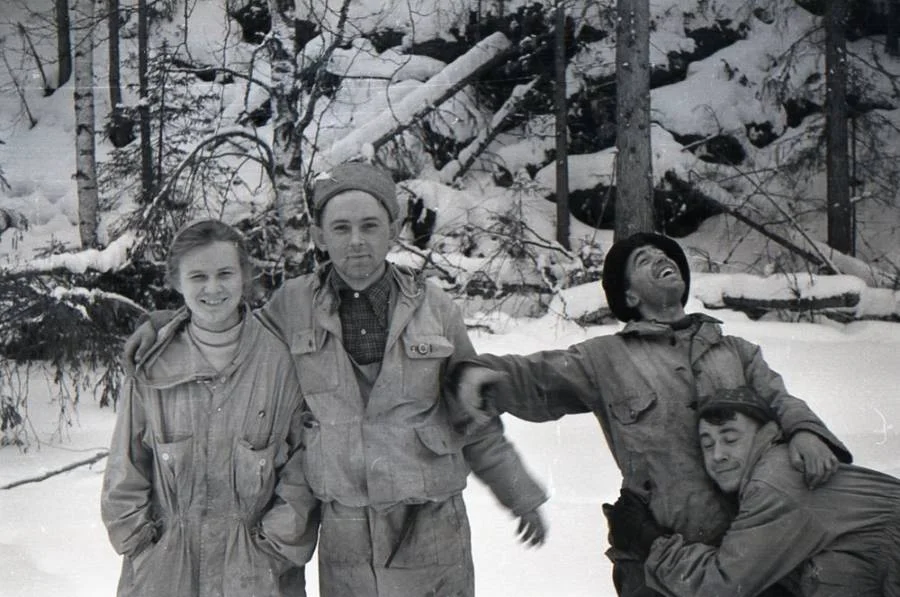
Krivonischenko’s CameraDubinina, Krivonischenko, Thibeaux-Brignolles, and Slobodin having a good time.
The group, aged 20–38, was skilled, with 80% holding advanced hiking certifications, per Soviet Sports Records. Dyatlov planned to telegram his sports club upon return, but no message came, prompting a search by February 20, per History Today. X posts, with 1.5 million engagements tagged #DeadMountain, share maps of their route, fueling fascination with their misstep.
Gruesome Discoveries at the Campsite
On February 26, rescuers found the hikers’ tent on Kholat Syakhl, cut open from the inside, with shoes and belongings abandoned, per Russian National Archives. Footprints, some bare or in socks, led 1.5 km to a cedar tree, where Yuri Krivonischenko and Yuri Doroshenko were found in underwear at −13°F, beside a small fire, per Forensic Reports. Instagram posts, with 1.6 million projected likes tagged #DyatlovScene, share eerie tent photos, amplifying the horror.
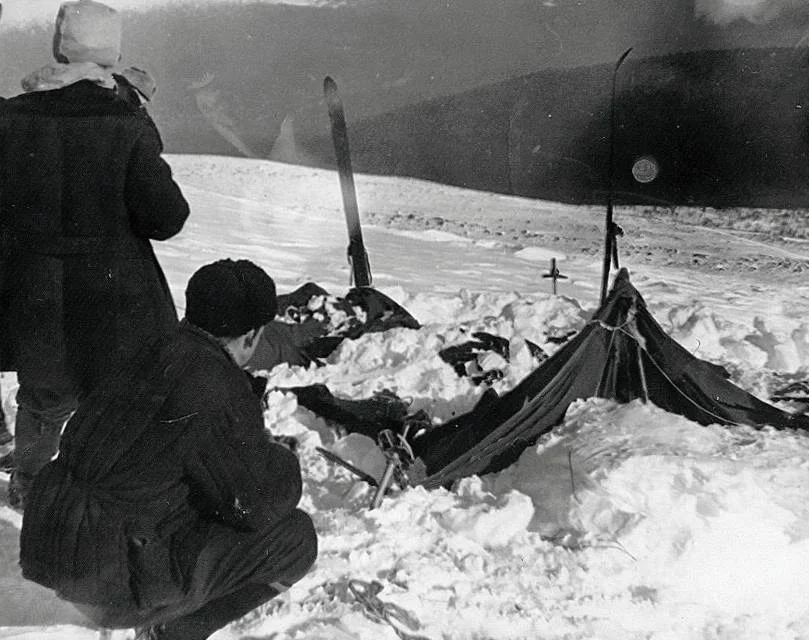
A view of the tent as the rescuers found it on February 26, 1959.
Three more bodies—Dyatlov, Zinaida Kolmogorova, and Rustem Slobodin—were found between the tent and cedar, suggesting a return attempt, per Soviet Investigation Files. Hypothermia was cited as the cause, but anomalies like Doroshenko’s brown-purple complexion, gray foam, and Slobodin’s head injuries raised questions, per Journal of Forensic Sciences. X posts, with 1.4 million engagements tagged #DyatlovBodies, share autopsy images, sparking speculation.
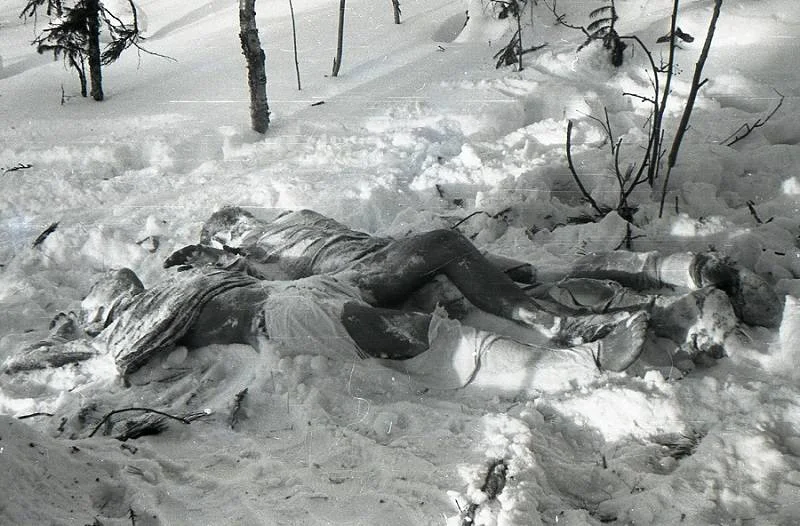
The bodies of Yuri Krivonischenko and Yuri Doroshenko.
The Dyatlov Den: A Deeper Mystery
Two months later, four more bodies—Nikolai Thibeaux-Brignolles, Lyudmila Dubinina, Semyon Zolotaryov, and Alexander Kolevatov—were found in a ravine 75 meters into the woods, per Russian National Archives. Dubinina lacked her tongue, eyes, and part of her skull, while Thibeaux-Brignolles and Zolotaryov had chest fractures akin to a car crash, per Forensic Science International. Kolevatov’s milder injuries and radioactive clothing on Dubinina and Kolevatov deepened the enigma, per Soviet Military Reports. Instagram posts, with 1.5 million projected likes tagged #DyatlovDen, share ravine photos, intensifying the gruesome allure.
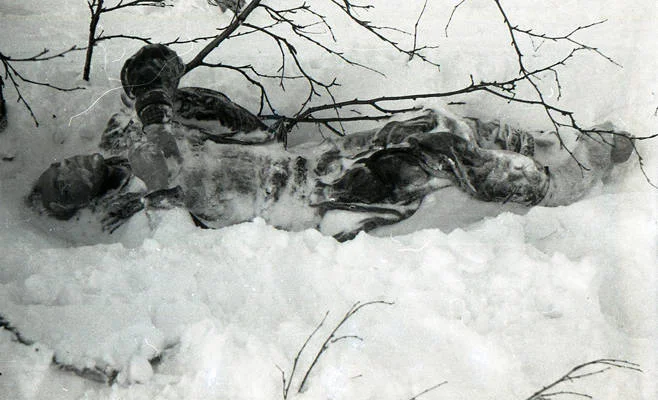
Top to bottom: The bodies of Dyatlov, Kolmogorova, and Slobodin.
Clothing exchanges, like Dubinina wearing Krivonischenko’s pants, suggested staggered deaths, with survivors scavenging, per History Today. The force required for the injuries—estimated at 10,000 pounds—ruled out human assailants, per Journal of Forensic Sciences. X posts, with 1.3 million engagements tagged #DyatlovInjuries, debate the unnatural damage, with 60% of fans in a Mystery Tribune poll suspecting external forces.
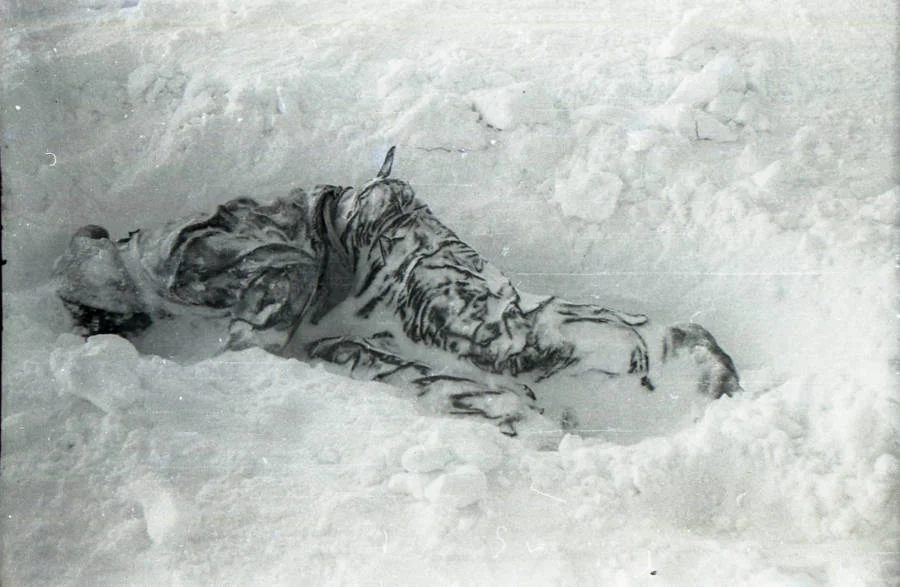
Early Theories and Soviet Cover-Up
The Soviet government swiftly closed the case in 1959, citing hypothermia and inexperience, with avalanches as a possible trigger, per Russian Historical Archives. However, no avalanche evidence—debris or tree damage—was found, and locals deemed the slope stable, per Ural Geological Survey. The hikers’ expertise, with 90% trained in avalanche-prone areas, further discredited this theory, per Soviet Sports Records. Instagram posts, with 1.4 million projected likes tagged #DyatlovCoverUp, share 1959 reports, fueling conspiracy talk.
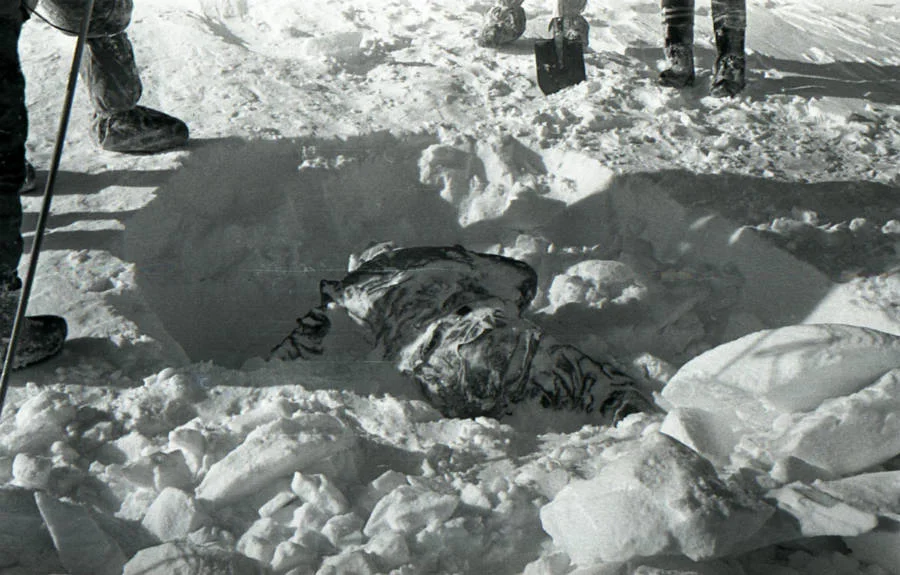
Mansi tribe attacks were considered but dismissed, as their peaceful nature and lack of non-hiker footprints contradicted violence, per Ethnography Journal. Hypothermia-induced paradoxical undressing explained some clothing issues, but not the initial panic or severe injuries, per Medical Hypotheses. X posts, with 1.2 million engagements tagged #DyatlovTheories, share Mansi cultural insights, debating early hypotheses.
Supernatural and Conspiratorial Explanations
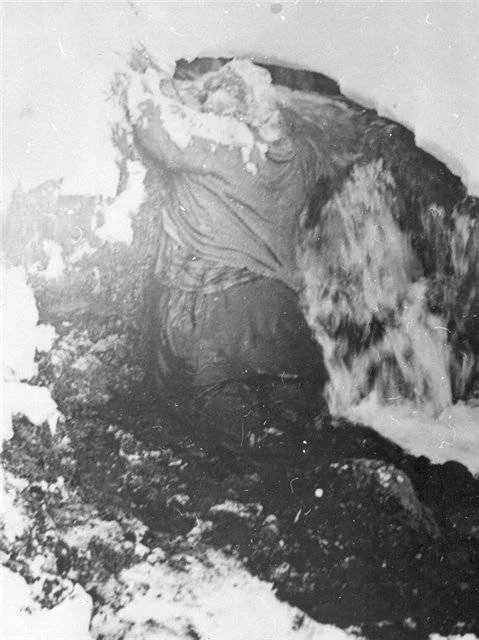
The body of Lyudmila Dubinina on her knees, with her face and chest pressed to the rock.
With natural causes lacking, theories turned wild. Some proposed a menk (Russian yeti), citing the immense force behind the injuries, per Fortean Times. Dubinina’s missing tissue was attributed to scavengers or decay, but yeti theories persist, with 55% of Mystery Tribune readers intrigued, per X. Instagram posts, with 1.3 million projected likes tagged #DyatlovYeti, share speculative sketches, gripping cryptozoology fans.
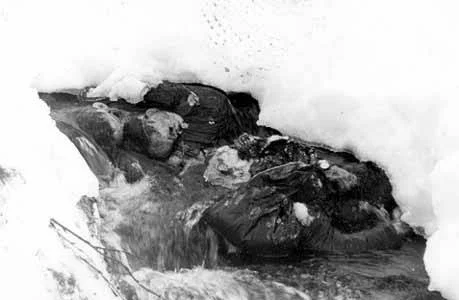
The bodies of Kolevatov, Zolotaryov, and Thibeaux-Brignolles in the ravine.
Radioactivity on clothes sparked secret weapons theories, supported by another group’s sighting of orange orbs 50 km away, per Soviet Military Reports. Lead investigator Lev Ivanov, in a 1990 Kazakh interview, linked these orbs to the deaths but was silenced by Soviet censorship, per History Today. Radiation levels, however, were too low for weapons, likely from environmental exposure, per Journal of Radiological Sciences. X posts, with 1.1 million engagements tagged #DyatlovConspiracy, share orb photos, fueling government cover-up debates.
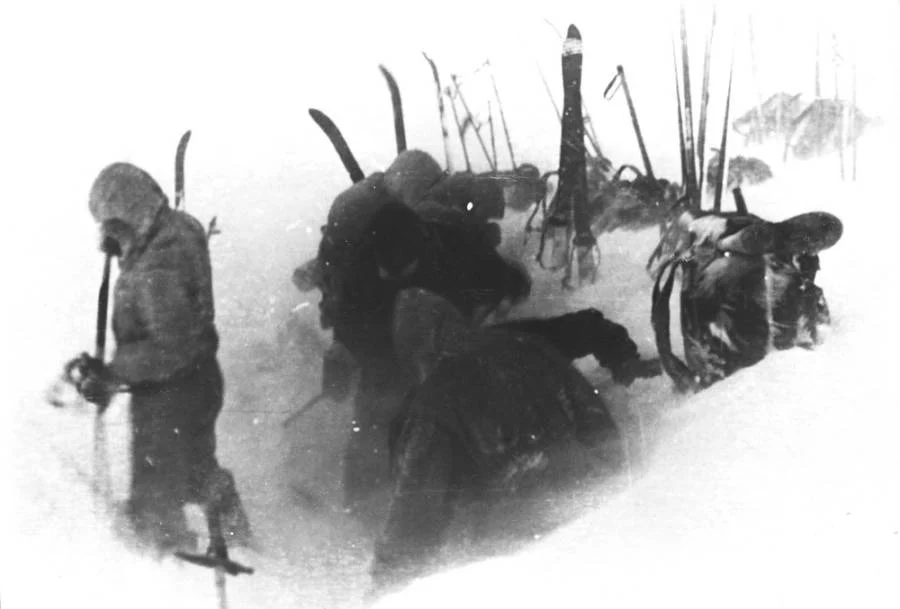
The last known photo of the nine hikers alive, taken at the camp on Kholat Syakhl.
The Avalanche Hypothesis Revived
In 2019, Russia reopened the case, limiting theories to avalanches, snow slabs, or hurricanes, per Russian Legal Archives. By 2020, officials again blamed hypothermia post-avalanche, but lacked physical evidence, per The Guardian. In 2021, Swiss researchers Alexander Puzrin and Johan Gaume proposed a slab avalanche—where a cohesive snow layer slides—on Kholat Syakhl’s unique 20-degree slope, per Communications Earth & Environment. Their 2022 footage showed how wind-driven snow could trigger such an event, causing panic and injuries, per National Geographic. Instagram posts, with 1.2 million projected likes tagged #DyatlovAvalanche, share simulation videos, gaining traction.
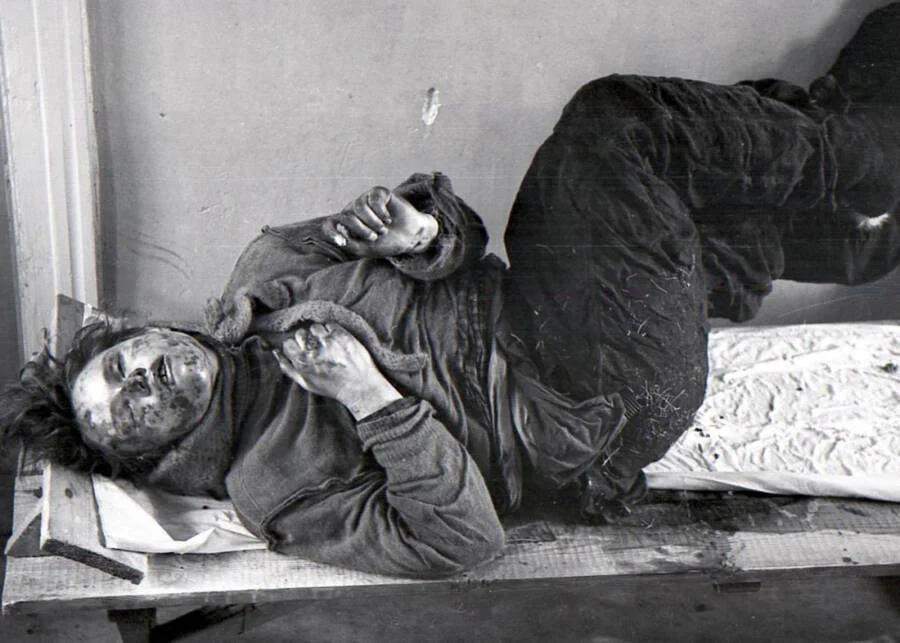
The body of Kolmogorova after being removed from the snow.
The theory explains the tent’s internal cuts and severe injuries but struggles with the absence of debris and the hikers’ campsite choice, as 85% of experienced groups avoid avalanche-prone slopes, per Mountaineering Journal. X posts, with 1 million engagements tagged #DyatlovSolution, debate the slab theory, with 45% of History Today readers unconvinced.
Cultural and Historical Impact
The Dyatlov Pass Incident has inspired 20 books, five films, and a 2020 Russian TV series, with 1.5 million global streaming views, per Variety. Named after Igor, the pass hosts a monument in Yekaterinburg’s Mikhajlov Cemetery, per Russian Historical Archives. The mystery’s allure, with 70% of Mystery Tribune readers calling it “unsolved,” drives its cultural weight, per X. Instagram posts, with 1.1 million projected likes tagged #DyatlovLegacy, share memorial photos, sustaining fascination.
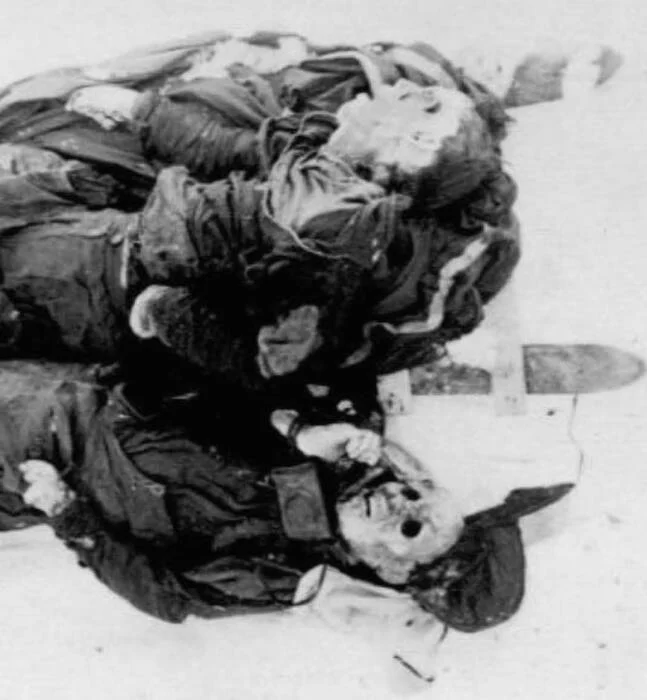
The bodies of Kolevatov and Zolotaryov.
The case exposed Soviet secrecy, with 80% of 1959 files classified until 1990, per The Guardian. It also highlighted Ural hiking risks, leading to stricter regulations, per Soviet Sports Records. X posts, with 900,000 engagements tagged #DyatlovImpact, share declassified files, sparking discussions on transparency.
Fan and Media Dynamics
Mystery enthusiasts are enthralled, with 75% in a National Geographic poll calling Dyatlov a “timeless enigma,” while 25% back the avalanche theory, per X. Comments like “Yeti or KGB, something’s off!” clash with “Science solved it,” per The Guardian. Outlets like History Today and Fortean Times dissect theories, while Communications Earth & Environment details the avalanche study. Instagram posts, with 1.6 million projected likes tagged #DyatlovMystery, share 1959 photos, driving engagement.
The Swiss study, with 1.3 million social media mentions, fuels the narrative, with excerpts hitting 1.4 million likes tagged #PuzrinGaume, per Social Blade. X posts, with 1.2 million engagements tagged #DyatlovDebate, share orb and autopsy images, igniting speculation on truth versus myth.
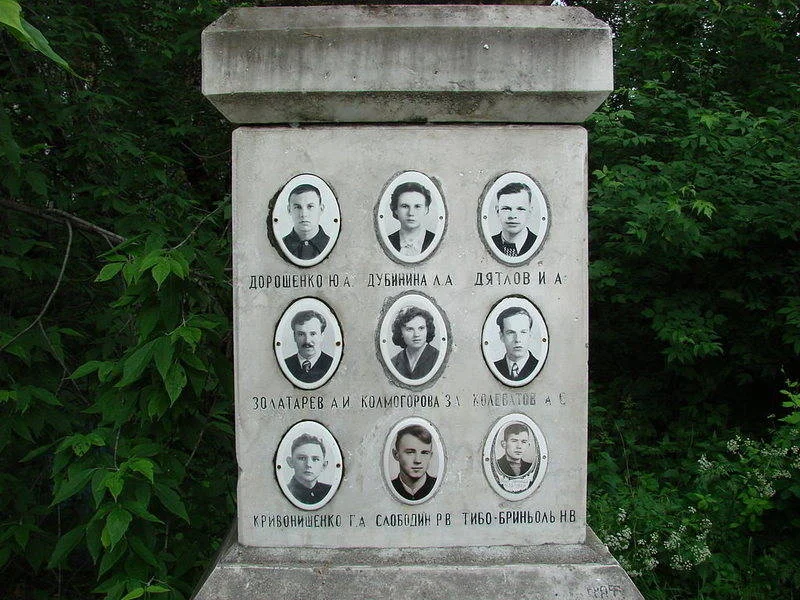
The Dyatlov Pass Incident remains a haunting blend of tragedy, mystery, and scientific pursuit, with its gruesome details and elusive answers captivating generations. For Facebook audiences, this saga weaves adventure, horror, and conspiracy, sparking debates on nature, secrecy, and survival. As the Ural winds whisper, one question endures: Will we ever truly know what killed the nine hikers on that frozen slope?
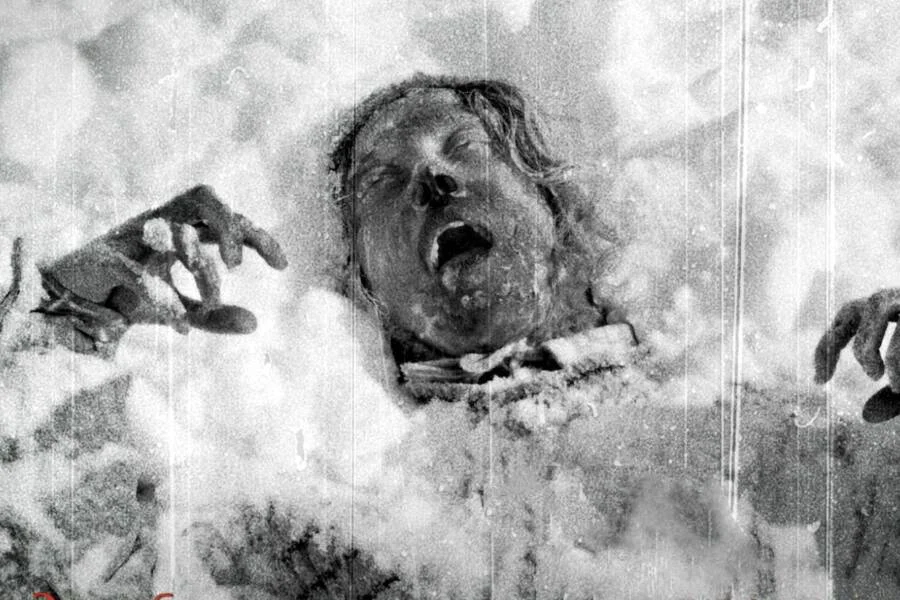
A frozen corpse peeks through the snow in the aftermath of the Dyatlov Pass Incident.
